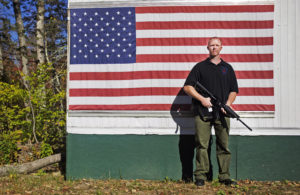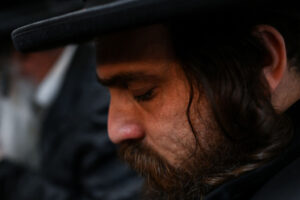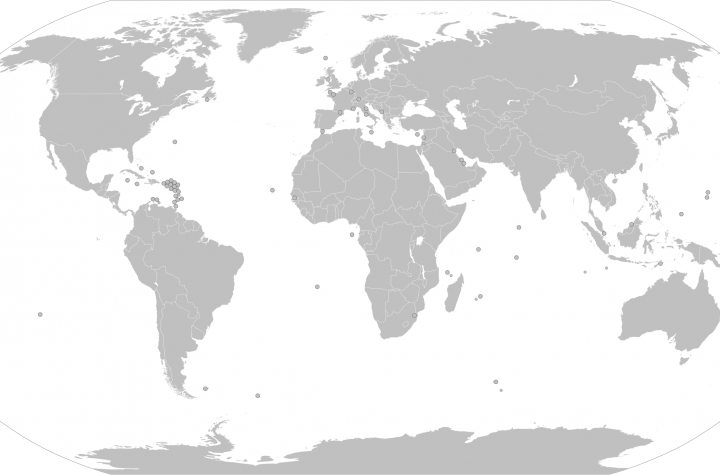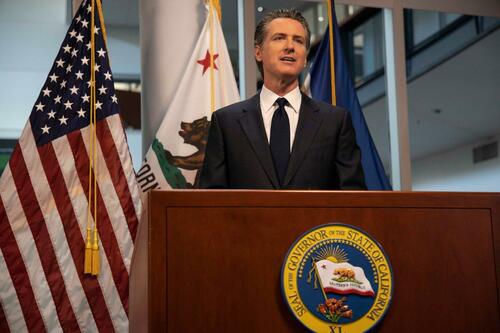
Monmouth
Coordinates:  51.80893°N 2.71938°W
51.80893°N 2.71938°W
| Monmouth | |
| Welsh: Trefynwy | |
 Monnow Bridge |
|
|
|
|
| Population | 8,547 |
|---|---|
| OS grid reference | SO505125 |
| Principal area | Monmouthshire |
| Ceremonial county | Gwent |
| Country | Wales |
| Sovereign state | United Kingdom |
| Post town | MONMOUTH |
| Postcode district | NP25 |
| Dialling code | 01600 |
| Police | Gwent |
| Fire | South Wales |
| Ambulance | Welsh |
| EU Parliament | Wales |
| UK Parliament | Monmouth |
| Welsh Assembly | Monmouth |
| List of places: UK • Wales • Monmouthshire | |
Monmouth (![]() /ˈmɒnməθ/ mon-məth; Welsh: Trefynwy = “town on the Monnow”) is a town in southeast Wales and traditional county townof the historic county of Monmouthshire. It is situated close to the border with England, where the River Monnow meets the River Wye with bridges over both.[1]
/ˈmɒnməθ/ mon-məth; Welsh: Trefynwy = “town on the Monnow”) is a town in southeast Wales and traditional county townof the historic county of Monmouthshire. It is situated close to the border with England, where the River Monnow meets the River Wye with bridges over both.[1]
Monmouth is twinned with Carbonne, France and Waldbronn, Germany.
Contents[hide] |
[edit]Etymology
The name Monmouth is an English contraction of ‘Monnow-mouth’. The Welsh name for the river, Mynwy, which may originally have meant “fast-flowing”, was anglicised as Monnow. The town was originally known in Welsh as Abermynwy (“mouth of the Monnow”), replaced byTrefynwy (“Monnow town” – the initial m of Mynwy mutating in Welsh to f) by the 17th century.[2] The name is pronounced by those who live in the area as ‘Mon-muth’; in most of Wales it is pronounced as ‘Mun-muth’.[citation needed]
[edit]Character
The medieval 13th century stone gated bridge at Monnow Bridge[3] is unique in Britain being the only preserved bridge of its design remaining. There is also a long bridge over the River Wye[4] rebuilt in 1617 and widened later. A feasibility study was made in 1999 by world-famous engineers Ove Arup and Partners (who led the engineering design of Sydney Opera House) for a new bridge further along from the Monnow bridge, but the scheme came to nothing and instead a more neutral bridge crossing was built, opening on March 15, 2004, thus allowing the old bridge to become pedestrianised.[5] This project has meant the demolition of the old cattle market.
[edit]History
Excavations undertaken by the Monmouth Archaeological Society on sites along Monnow Street have uncovered a wealth of information about the early history of the town. Indeed, the Council for British Archaeology have designated Monmouth as one of the top ten towns in Britain for archaeology.[6]
[edit]Roman times
Monmouth as an organised settlement dates back to the times of the Roman occupation of Britain and the conquest of Wales. The Romans called it Blestium, and it was part of a network of Roman forts covering the region, linked via Roman roads to Abergavenny orGobannium, Usk known as Burrium, later Isca Augusta at Caerleon and Glevum at Gloucester. Archaeologists and historians have found items of Roman pottery and Roman currency from that period.
[edit]Middle Ages
The town appears in the Domesday Book, and for the 11th and 12th centuries the town and surrounding areas were ruled by Norman French lords after the conquest of England byWilliam the Conqueror in 1066. During this time, Monmouth Castle[7] was built, in 1067 under William Fitz-Osbern of Breteuil, Normandy, a significant castle builder, holding commanding views over the surrounding area from a sound defensive site. Initially it would have been a motte and bailey castle, rebuilt in stone and later refortified and developed over time.
A Benedictine priory[8] was also created in 1101,[9] and it was traditionally there that Geoffrey of Monmouth – author of the Historia Regum Britanniae (History of the Kings of Britain) – gained his education. A fortified bridge[10] was built during the 13th century.
The Battle of Monmouth was fought in 1233 between the rebel forces of Richard Marshal, 3rd Earl of Pembroke, and a royalist force under John of Monmouth. The rebels carried the day and St Thomas’ Church and Monnow Bridge were torched in the battle, which according to Glamorgan-Gwent Archaeological Trust records took place beside the River Monnow on Castle Field, land today known as Vauxhall Fields. The battle was immortalised by an illustration by 13th century historian Matthew Paris, which shows Richard Marshal unhorsing Baldwin of Guisnes. The original is owned by Corpus Christi College, Cambridge.
The castle came into the possession of the House of Lancaster through the marriage of John of Gaunt to Blanche, a Monmouth based heiress. John of Gaunt strengthened the castle, adding the Great Hall.
In 1387, Henry V was born in Monmouth Castle in the Queen’s Chamber within the gatehouse. The castle became a favourite residence of the House of Lancaster. Henry would win theBattle of Agincourt in 1415. Many parts of Monmouth, including the town’s main square, are named after this battle.
During the rebellion of Owain Glyndwr between 1400 and 1412 Monmouth Castle and walled town was not attacked by Welsh forces, however skirmishes and battles were fought in the area, such as at Battle of Campston Hill when Prince Henry’s men followed a retreating force of Glyndwr’s, capturing the Welsh standard and killing the standard bearer, Ellis ap Richard ap Howell ap Morgan Llwyd. Other battles took place at nearby at Craig-y-Dorth, at Grosmont and Usk, such as the Battle of Pwll Melyn. Grosmont town was razed and Abergavenny andCrickhowell attacked.
[edit]Post medieval times

1610 Map of Monmouth by John Speed
In 1605, James I granted Monmouth a town charter by letters patent. The granting of the charter included the charge that the town “at all perpetual future times … be and remain a town and borough of Peace and Quiet, to the example and terror of the wicked and reward of the good”.[11]
The layout of the town as depicted in Speede’s map of 1610 would be easily recognisable to present day inhabitants, with the layout of the main axis from the castle via the main street, Monnow Street, to the bridge clearly visible. Monnow Street is a typical market street, in being wide in the middle (for those selling) and narrow at each end (to help prevent the livestock escaping).
In 1840 at Monmouth’s Shire Hall, Chartist protestors John Frost, Zephaniah Williams and William Jones became the last men in Britain to be sentenced to be hanged, drawn and quartered after being found guilty of treason following riots in Newport that led to 20 deaths. The sentences were later commuted to transportation to Australia.[12]
Four railways were built to serve Monmouth between 1857 and 1883; the Coleford, Monmouth, Usk and Pontypool Railway, theRoss and Monmouth Railway, the Wye Valley Railway, and the Coleford Railway. All of these closed between 1917 and 1964, since when Monmouth has been without rail services.[13] One of the former lines has now been replaced by a major road, built along the same route. Monmouth’s main railway station, known as Monmouth Troy, was a coal distribution depot and a base for heavy goods vehicles for many years after its closure as a part of the rail network, but the building has now been dismantled and re-erected at Winchcombe railway station on the Gloucestershire Warwickshire Railway.[14] The other station at Monmouth was Monmouth May Hill on the Ross and Monmouth Railway, built on the opposite bank of the River Wye to the town centre. This operated for many years as Monmouth Sawmills and Gas Works after its closure as part of the rail network.
[edit]Education
Apart from Monmouth Comprehensive School,[15] with over 1,600 pupils, there are two independent schools – Monmouth School[16] (founded 1614) and Haberdashers’ Monmouth School for Girls[17] (founded 1892). Secondary students wishing to learn through the medium of Welsh are bused to Ysgol Gyfun Gwynllyw in Pontypool. There are several state primary schools, with most areas served by both infants’ and juniors’schools. Welsh medium primary education for the town is provided by Ysgol Gymraeg Y Fenni. There is a Welsh-language parent-and-toddler group – “Cylchoedd Ti a Fi” Trefynwy – which operates under the umbrella of Mudiad Ysgolion Meithrin. Coleg Gwent offers short course at their “Learn IT Centre.”
[edit]Annual events
The annual Monmouth Show has been held each year (traditionally on the last Thursday of August) since 1919 (when it was called the Monmouthshire County Show), though its history can be traced to 30 May 1857 when the 8th Duke of Beaufort and Sir Charles Morgan M.P. put up the funds for a Monmouth Cattle Show. Prior to that there had been an agricultural society in the town dating back to the 1790s, which held ploughing competitions.
Every year is also the well known, Monmouth Music Festival and the St David’s Foundation raft race. A regular market takes place at the bottom of town.
[edit]Tourism
Monmouth is a market town located at the confluence of three rivers – the Trothy, Monnow and (more famously) the river Wye. The town overlooks the hills of Abergavenny, Hay Bluff and the Brecon Beacons. It is in close proximity of the Royal Forest of Dean and Wye Valley.
Tourist attractions include the Monmouth Castle, the free entry Nelson museum and Shire Hall – a visitors centre and tourist office. The Savoy Theatre on Church Street, built on the site of the oldest such building in Wales,[18] functions as both a cinema and theatre. The Blake Theatre is home to a variety of concerts and dramatic productions. Monnow Bridge can be seen looking down through the town. The buildings and their designs along the high street are very varied, depicting development throughout the eras.
[edit]Business
The town has many independent cafes and restaurants. The high street has a mixture of shops including well known high street names. Church Street, also known as Monmouth Old Town is a cobbled street offering many services and is home to the locally renowned[citation needed] fruit seller, Munday & Jones. Notable is the amount of Supermarkets; Cooperative Food, Marks & Spencer Food, Waitrose, Iceland Foods, Lidl and soon[when?] to be One Stop. Banks also feature heavily in the town with nearly every major bank having business there. Presently, it is the only town within the region not to have some form of nightclub or predominant music venue.
[edit]Public houses
There are numerous public houses in the centre of Monmouth, including the Old Nags Head, the Queen’s Head, the Punch House, the Griffin, the Gloucester, the Vinetree, the King’s Head (Wetherspoon), the Three Horseshoes, the Green Dragon and the Gatehouse.
[edit]Notable people
- See also Category:People from Monmouth
- See also Category:People from Monmouthshire

Charles Rolls statue (foreground) and astatue of Henry V of England (elevated behind) in Monmouth.
People associated with Monmouth include:
- Geoffrey of Monmouth, the Oxford-based cleric, born in 1090 and believed to be originally from the area, wrote Historia Regum Britanniae, the “History of British Kings”.[19]
- Gilbert de Clare, Earl of Hertford and Guardian of England, died at Monmouth Castle on December 7, 1295.[20]
- Henry III‘s second son Edmund Crouchback, the 1st Earl of Lancaster, added the Great Hall to house the royal courts at Monmouth Castleafter being granted possession by his father, who also named him Steward of England.[21]
- King Edward II was briefly imprisoned at Monmouth Castle in 1326 after being overthrown by his wife Isabella and her lover Roger Mortimer, the Earl of March.[22]
- Monmouth Castle was a favourite residence of Henry Bolingbroke, the future Henry IV of England, who seized the throne from Richard II in 1399.
- Henry IV’s son, the future Henry V and victor at the battle of Agincourt over the French in 1415, was born in Monmouth Castle in 1387 and brought up at Courtfield in nearby Lydbrook.[23]
- William Jones, a liveryman of Worshipful Company of Haberdashers from nearby Newland, founded the first of the town’s grammar schools in 1614.
- Oliver Cromwell visited Monmouth on his way to retake Chepstow Castle and lay siege to Pembroke Castle in 1648 during the Second Civil War.[24]
- Philip Evans, Jesuit priest and martyr, was born in the town and based at the nearby Catholic seminary at the Cwm, Llanrothal.[25]
- James Scott, 1st Duke of Monmouth, leader of the Monmouth Rebellion of 1685.
- John Graves Simcoe, the first governor of Upper Canada and the founder of Toronto, lived at the Old Court in nearby Whitchurch.
- Poets William Wordsworth, Samuel Coleridge, Alexander Pope, Thomas Gray and Robert Southey all visited and were inspired by the Wye Valley, as was landscape painter JMW Turner.[26]
- Admiral Horatio Nelson paid two visits to the town and approved a naval temple on the nearby Kymin Hill.[27] The Nelson Museum, Monmouth is home to one of the largest collections of Nelson material, bequeathed to the town by Lady Llangattock (d. 1923), mother of Charles Rolls.
- Victoria Cross hero Corporal William Wilson Allen is buried at Monmouth Cemetery.
- HMS Monmouth was sunk with all hands on November 1, 1914, by German cruisers SMS Scharnhorst and SMS Gneisenau off the Chilean Coast at the Battle of Coronel.[28] St Mary’s Church, Monmouth, contains a memorial to the men who lost their lives and the church hosts an annual service in remembrance. Seven Royal Navy ships have been named after the Welsh town, including a Type 23 frigate launched in 1991 which is still in operation.
- Charles Rolls, who lived at The Hendre near Monmouth and was co-founder of the Rolls-Royce company, was the first man to make a non-stop double crossing of the English Channelby plane. There is a statue of Charles Rolls in Agincourt Square.[29]
- Dave Edmunds, rock musician, lives in the town.[30] He was instrumental in the conception of Rockfield Studios, situated just outside the town, where the band Queen recorded their hit single Bohemian Rhapsody, as did Oasis their multi-million selling album (What’s the Story) Morning Glory? in 1995.
- Jake Thackray, poet and singer-songwriter, lived in Monmouth for more than 20 years before his death in 2002.
- Peter Thorneycroft was MP for Monmouth between 1945 and 1966, He was President of the Board of Trade under Prime Minister Winston Churchill and then Chancellor of the Exchequer under Harold Macmillan. He became Baron Thorneycroft of Dunston and was made Chairman of the Conservative Party during the early leadership of Margaret Thatcherfrom 1975-1981.
- Among ex-pupils of Monmouth School are politicians The Lord Moynihan, Cliff Tucker and Derek Ezra, Baron Ezra, international rugby players Eddie Butler, John Gwilliam, Tony Jorden, Keith Jarrett and Richard Parks, international rugby referee Wayne Barnes, equestrian David Broome, champion racehorse trainer Major Dick Hern, Glamorgan and England cricketer Steve James, pre-war Glamorgan captain Trevor Arnott (buried at Dixton Church), poet Paul Groves, ‘Allo ‘Allo! actor Richard Marner, actor and raconteur Victor Spinetti, TV presenter Glyn Worsnip, TV doctor Mark Porter, BBC Wales TV presenters Phil Parry and Roger Pinney, rock musician Grant Nicholas, Moscow Olympics bronze-medal rowerCharlie Wiggin, Beijing Olympics silver-medal rower Tom Lucy, and 11-time Cambridge Boat Race coach and world silver-medal rower Robin Williams. A former pupil who found notoriety was John Vassall, naval attache to the British Embassy in Moscow, who was jailed for 18 years in 1962 for spying for the Russians.
- Music conductor and author Jane Glover attended Haberdashers’ Monmouth School for Girls. Other former pupils include TV news correspondent Charlotte Hume, BBC Wales TV presenter Frances Donovan, former Casualty actress Sandra Huggett, TV presenter Lisa Rogers, actress Zoie Kennedy, harpist Jemima Phillips and former Liberal MP and head of the RSPCA Jackie Ballard.[31]
- Wales and British Lions rugby player John Bevan, who played in the legendary 23-11 Barbarians defeat of the All Blacks in 1973, is the Monmouth School rugby master. Former school cricket coach Graham Burgess played 14 seasons for Somerset and was a county umpire until retiring at the end of the 2008 season.[32]
- Emma Stansfield, British actress who played Ronnie Clayton in Coronation Street from 2005 to 2006, is from the town.
- Historian and TV presenter Professor Saul David is from Welsh Newton and was educated at Monmouth Comprehensive School.[33]
- Robert Plant of Led Zeppelin had a house, Argoed, in Penallt in the late 1970s and early 1980s.[34] The house had previously been owned by the MP Richard Potter, the father of socialist reformer Beatrice Webb. She and her husband, socialist reformer Sidney Webb, would often stay at the house, and were occasionally visited by their friend, the playwrightGeorge Bernard Shaw.[35]
- Comedian Ken Goodwin and astrologer Russell Grant also lived in the area for a number of years.
[edit]Gallery
-
View towards Monmouth from near Penallt in theWye Valley
-
The River Monnow at Monmouth
-
Church Street, apedestrianised shopping area
-
Remains of the Great Tower of Monmouth Castle
-
Bridge over the River Wye


















0 thoughts on “Monmouth – About Monmouth from Wikipedia”